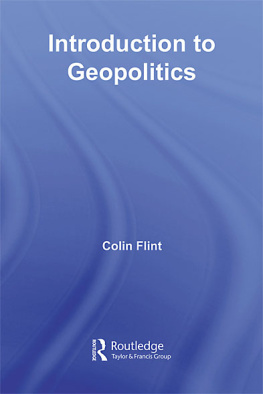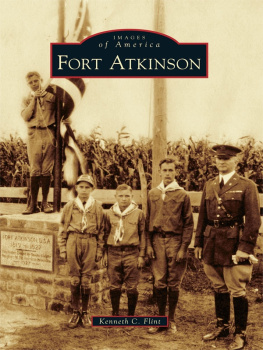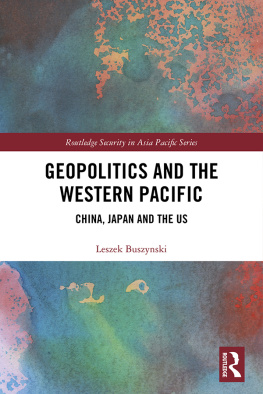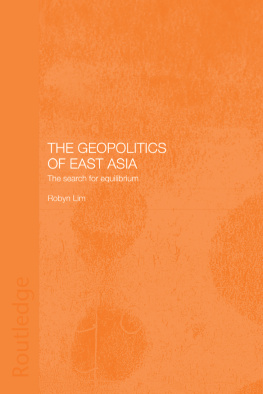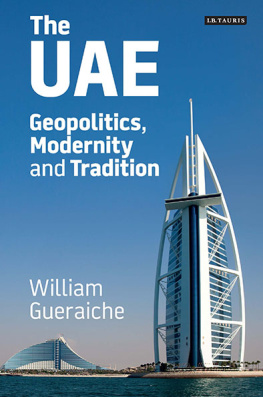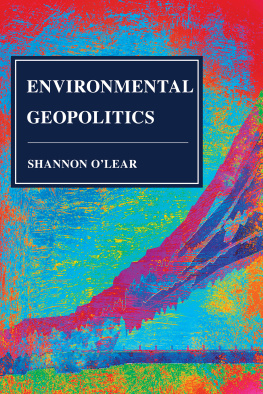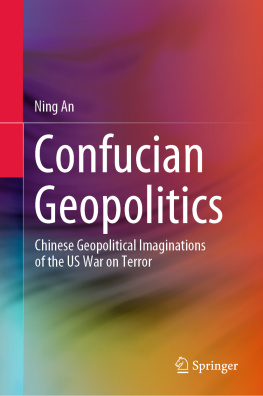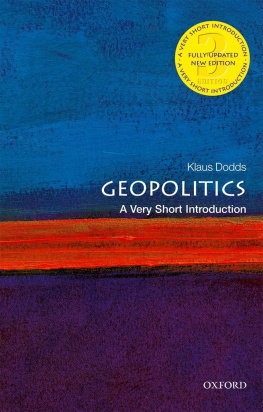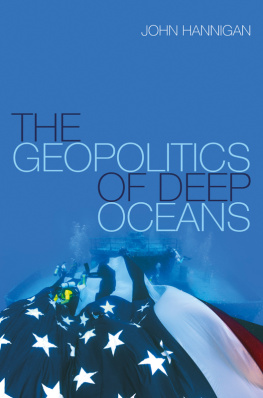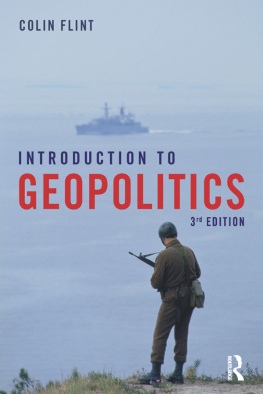Introduction to Geopolitics
This lucid and concise introductory textbook guides students through their first engagement with geopolitics. It offers a clear framework for understanding contemporary conflicts by showing how geography provides opportunities and limits upon the actions of countries, national groups, and terrorist organizations. The overarching theme of geopolitical structures (contexts) and geopolitical agents (countries, national groups, individuals, etc.) is accessible and requires no previous knowledge of theory or current affairs.
Throughout the book, case studies including the rise of al-Qaeda, the Korean conflict, IsraelPalestine, Chechnya, and Kashmir emphasize the multi-faceted nature of conflict. These, along with activities, aid Introduction to Geopolitics in explaining contemporary global power struggles, the global military actions of the United States, the persistence of nationalist conflicts, the changing role of borders, and the new geopolitics of terrorism. Throughout, the readers are introduced to different theoretical perspectives, including feminist contributions, as both the practice and representation of geopolitics are discussed.
Introduction to Geopolitics is extensively illustrated with diagrams, maps, and photographs. Reading this book will provide a deeper and critical understanding of current affairs and facilitate access to higher level course work and essays on geopolitics. Both students of geography and international relations and general readers alike will find this book an essential stepping-stone to a fuller understanding of contemporary conflicts.
Colin Flint is an Associate Professor of Geography at the University of Illinois. His research interests include geopolitics and hate groups. He is editor of The Geography of War and Peace (2005) and Spaces of Hate (2004) and co-author, with Peter Taylor, of Political Geography: World-Economy, Nation-State, and Locality (2000).
Introduction to Geopolitics
Colin Flint

LONDON AND NEW YORK
First published 2006
by Routledge
2 Park Square, Milton Park, Abingdon, Oxon OX14 4RN
Simultaneously published in the USA and Canada
by Routledge
270 Madison Ave, New York, NY 10016
Routledge is an imprint of the Taylor & Francis Group, an informa business
This edition published in the Taylor & Francis e-Library, 2006.
To purchase your own copy of this or any of Taylor & Francis or Routledges collection of thousands of eBooks please go to www.eBookstore.tandf.co.uk.
2006 Colin Flint
All rights reserved. No part of this book may be reprinted or reproduced or utilized in any form or by any electronic, mechanical, or other means, now known or hereafter invented, including photocopying and recording, or in any information storage or retrieval system, without permission in writing from the publishers.
British Library Cataloguing in Publication Data
A catalogue record for this book is available from the British Library
Library of Congress Cataloging in Publication Data
Flint, Colin (Colin Robert)
Introduction to geopolitics / Colin Flint.
p. cm.
Includes bibliographical references and index.
1. GeopoliticsTextbooks. I. Title.
JC319.F55 2006
320.12dc22 2005033530
ISBN 0-203-50376-7 Master e-book ISBN
ISBN13: 978-0-203-50376-8 Master e-book ISBN
ISBN13: 978-1-134-28430-6 ePub ISBN
ISBN10: 0-415-34494-8 (hbk)
ISBN10: 0-415-34493-X (pbk)
ISBN13: 978-0-415-34494-4 (hbk)
ISBN13: 978-0-415-34493-7 (pbk)
CONTENTS
FIGURES
| 1.1 | Africa: independent countries and the decline of white-rule |
| 1.2 | Lenin Statue, Moscow |
| 1.3 | The Iron Curtain |
| 1.4 | Sir Halford Mackinders Heartland theory |
| 1.5 | Woman and child in Iraqi bombsite |
| 2.1 | Modelskis world leadership cycle |
| 2.2 | Preference and availability of world leadership |
| 2.3 | Imperial overstretch |
| 2.4 | Camp Delta |
| 2.5 | Unmanned military drone |
| 3.1 | US troops in Kosovo |
| 3.2 | British World War II propaganda poster |
| 3.3 | The Caspian Sea |
| 3.4 | Freedom Walk |
| 4.1 | World War II memorial, Stavropol, Russia |
| 4.2 | Hollywood biblical epic |
| 4.3 | Nests for spies |
| 4.4 | The Arab world |
| 4.5 | Saddam Hussein: benefactor of the Arab world |
| 5.1 | World War I telegram to next of kin |
| 5.2 | Prelude to ethnic cleansing |
| 5.3 | Ethnic cleansing: expulsion |
| 5.4 | Ethnic cleansing: eradication |
| 5.5 | Ethnic cleansing: expansion |
| 5.6 | Chechnya |
| 6.1 | Closed border: EgyptIsrael |
| 6.2 | Open border: Russian Caucasus |
| 6.3 | Hypothetica |
| 6.4 | IsraelPalestine I: Oslo II Agreement |
| 6.5 | IsraelPalestine II: Palestinian villages and Israeli settlements |
| 6.6 | Korean peninsula |
| 7.1 | Metageography |
| 7.2 | Dresden after Allied bombing |
| 7.3 | War on Terror |
| 7.4 | Geography of US bases |
| 8.1 | Child soldiers |
| 8.2 | Returning from war |
| 8.3 | Historical roots of conflict in Kashmir |
TABLES
| 1.1 | The geography of infant mortality rates |
| 1.2 | Features of classic geopolitics |
| 2.1 | Cycles of world leadership |
| 2.2 | US global troop deployments |
| 3.1 | Constructing a geopolitical code for world leadership |
| 4.1 | Readers Digest articles identifying threats to the American way of life |
| 7.1 | The problem of defining terrorism |
| 7.2 | Waves of terrorism and Modelskis model |
BOXES
| 1.1 | Place and Palestinian identity |
| 1.2 | Winston Churchills Iron Curtain speech |
| 1.3 | Environmental determinism and geopolitics |
| 2.1 | Competition between China and the US |
| 2.2 | Wallersteins world-system theory |
| 2.3 | World Wars I and II in historical context |
| 2.4 | Abu Ghraib and the consequences for world leadership |
| 2.5 | Stress on the military power of the world leaderfood for thought in the US military |
| 2.6 | Technology and the global reach of the US military |
| 3.1 | Power and the Royal Military Academy Sandhurst |
| 3.2 | Mapping the Global Future: the definition of threat |
| 3.3 | The geopolitics of the Washington Consensus |
| 4.1 | Dulce et Decorum Est |
| 4.2 | Geopolitical word association |
| 4.3 | Baghdad blog |
| 5.1 | Foreign policy as a masculine practice |
| 7.1 |

